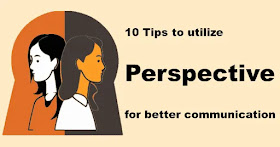Who is right?
In the pursuit of truth and understanding, we quickly encounter contrasting perspectives. In order to pursue growth and collaboration, we need to acknowledge diverse viewpoints and also successfully navigate conversations to come up with solutions.
Assertive statements like "You are wrong," "You should ..." or a sentence that categorize the person are often hastily thrown into the discourse, with consequences that reach far beyond the statement itself.
This style of communication hinder productive dialogue and pollutes the atmosphere - individuals who get attacked with such statements are less inclined to explore, learn, and collaborate:
Defensive Reactions
Statements asserting that someone is "wrong" or "ignorant" come across as verbal violence and can trigger defensive reactions. People become less open to considering alternative viewpoints and focus more on defending their own position.
Communication Breakdown
Assertive language without considering the other person's perspective may lead to a breakdown in communication. It can create a hostile environment where participants feel attacked rather than engaged in a meaningful discussion.
Strained Relationships
Telling someone what they must think strains interpersonal relationships, as this implies an imbalance of power. Building mutual respect and understanding becomes challenging when communication is characterized by one-sidedness.
Closed-Mindedness
Assertive statements often contribute to a closed-minded atmosphere, where participants are less likely to engage in open-minded exploration of different ideas. Feedback that a perspective is not welcome will hinder the potential for collective learning and growth.
Barriers
When dismissing another person's perspective outright, they are unlikely to consider the perspective of the dismissing person more valid than vice versa. With this default position, dialogue is extremely challenging.
Missed Opportunity for Understanding
Categorical statements may close off opportunities for understanding the nuances of the other's viewpoint. They often assume a binary right-wrong dichotomy, neglecting the possibility that both perspectives can offer valuable insights or even overlaps.
Ten tips to improve your communication
Aggressive language is evitable. Instead of using confrontational language, here are some tips for a more constructive approach:

Express Curiosity
Instead of asserting that someone is wrong, express curiosity about their perspective. Ask open-ended questions to understand their reasoning and the experiences that shape their viewpoint.
Listen Actively
Practice active listening to truly understand the nuances of the other person's perspective. Engage in the conversation by paraphrasing, summarizing, and asking clarifying questions. This demonstrates a genuine interest in their viewpoint.
Adapt and Connect
Be aware of the different cultural backgrounds and adapt your communication style accordingly. This fosters a respectful environment and also promotes effective understanding.
Seek Common Ground
Identify areas of agreement or common ground before delving into differences. This can create a foundation for more constructive discussions.
Acknowledge Agreement
Acknowledge valid points from the other person's perspective. Recognize areas of agreement to build rapport and establishes a foundation for finding common solutions to shared challenges.
Use "I" Statements
Share your own perspective using "I" statements to convey your feelings and thoughts without implying anything about the other person's perspective.
Offer Information
You may believe the other person might benefit from additional information. Consider sharing it in a way that is informative and invokes curiosity. Prescriptive suggestions trigger defensive mechanisms, and these do not advance the conversation.
Be Patient
If your perspective is not immediately understood, exercise patience and elaborate your perspective. Use clear and concise language, provide examples, and repeat your key points to ensure effective communication.
Frame respectfully
Frame disagreements as differences in perspective rather than absolute right or wrong. This allows for a more respectful exchange of ideas.
Stay Constructive
Apply constructivism when you offer feedback. Focus on the specific behaviors or ideas that you want to address. Avoid making personal attacks. This encourages a positive and solution-oriented atmosphere.
Don't worry if you miss out on using these occasionally - it takes a lot of practice, self-awareness and patience to master these.
Conclusion
In the complex landscape of communication, the ability to navigate diverse perspectives is not only a skill but a necessity. By adopting a mindset of curiosity, empathy, and open dialogue, we can transcend the limitations our own biases and beliefs. Avoiding the use of overly assertive language helps us create environments conducive to mutual understanding and collaboration. As we engage in discussions, let us remember that true progress lies not in scoring points by declaring someone "wrong" - but in our collective willingness to explore, and embrace the richness of human experience.
It takes a tremendous amount of courage to open up a controversial perspective when the response might be backlash, personal attacks or outright bullying. Ask yourself: Do you want to be the person who makes it easier, or harder, for others to say what they think? Do you want to be the one who builds bridges, or burns them? Do you want to work towards understanding - or hostility?
With that, I would leave you with the following default stance - whenever someone starts a conversation,
Assume Positive Intent.
No comments:
Post a Comment